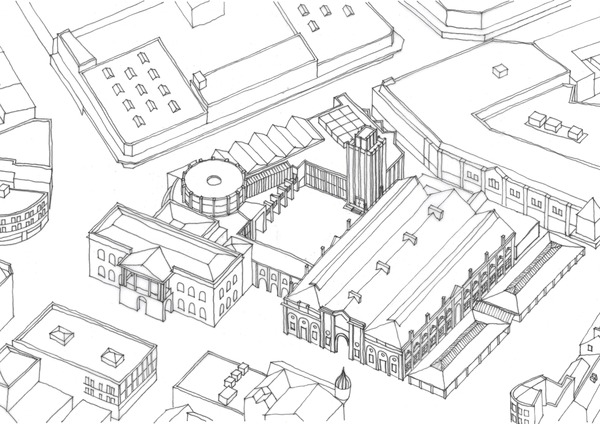The built environment continously evolves from the collective endeavours of many generations and this thesis is part of the research strand that questions the future highstreet. Set in Accrington, the thesis found that this town had its golden age during the Industrial Revolution, when street activity was at its highest and most dynamic. Since then, factors such as population decrease in the area and the rise of online shopping has led to the abandonment of the highstreet, where many once-thriving storefronts are found to be boarded up and closed. Identifying Blackburn Road as a key part in need of revival, the thesis explores how the design of a new Civic Centre could be the catalyst for change.
Drawing from the local context, we found a link between Baroque architecture and Accrington's growth, which fuelled our research. Through studies, we found principles of Baroque architecture could be extracted, in order to produce something contemporary that still acknowledged the history. Thus, this thesis explores the question: Can contemporary Baroque principles be applied to revive the town centre of Accrington, in order to create a new civic space that encourages the use of not only the existing, but also the new programmes for the community to engage with?
The solution is found in the designed Civic Centre building, that sits on the key intersection of the commerical route (Broadway) and civic route (Blackburn Road) of Accrington, offering not only retail amenities, but also learning spaces to respond to both fronts. The hidden square offers a space towards the public realm, while the viewing tower continues the relationship between the town and the wider landscape beyond.


